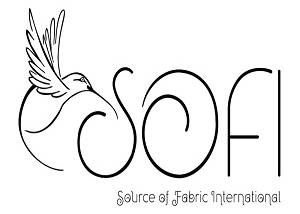Digital fabric printing has revolutionized the textile industry, offering unmatched precision, vibrant colors, and endless design possibilities. If you’re new to this exciting technology, this guide will help you understand the basics and get started on your digital fabric printing journey. Here are seven essential steps to mastering digital fabric printing.
1. Understanding Digital Fabric Printing
Digital fabric printing involves transferring designs onto fabric using digital technology. Unlike traditional methods, digital printing uses a computer to control the application of ink, allowing for intricate patterns and detailed images. This technique is perfect for creating custom designs, small runs, and prototypes, offering flexibility and efficiency.
2. Choosing the Right Fabric
Making the right fabric choice is essential to effective digital printing. Different fabrics react differently to inks and printing processes. Natural fibers like cotton, silk, and linen are ideal for most digital printing projects because they absorb ink well and produce vibrant colors. Synthetic fabrics like polyester can also be used but may require special treatments to ensure the ink adheres properly.
3. Preparing Your Design
Preparing your design is a vital step in digital fabric printing. Start by creating or selecting a high-resolution image or pattern. Use design software like Adobe Photoshop or Illustrator to ensure your design is crisp and clear. Pay attention to color profiles and resolution; a minimum of 300 DPI (dots per inch) is recommended for high-quality prints. At SOFI, we offer design assistance to help you achieve the best results.
4. Pre-Treating the Fabric
Pre-treating the fabric is necessary to prepare it for digital printing. This process involves applying a special coating to the fabric to help the ink adhere better and ensure the colors remain vibrant. The pre-treatment process can vary depending on the type of fabric and ink being used. At SOFI, we ensure that all fabrics are pre-treated correctly to guarantee optimal print quality.
5. Printing the Fabric
Once your design is ready and your fabric is pre-treated, it’s time to print. Digital fabric printers work similarly to inkjet printers, but they use specialized textile inks. The fabric is fed into the printer, and the design is printed directly onto it. This process allows for precise and detailed prints, even with complex designs. The printed fabric is then cured using heat or steam to set the ink and ensure durability.
6. Post-Treatment and Finishing
Post-treatment and finishing are essential to complete the digital fabric printing process. After printing, the fabric may require additional treatments to enhance its appearance and feel. This can include washing to remove any excess ink, steaming to set the colors, and applying finishes to improve texture and durability. At SOFI, we offer a range of finishing options to ensure your printed fabric looks and feels exactly as you envisioned. Read More About The Latest Trends in Fabric Printing Techniques
7. Applications of Digital Fabric Printing
For designers and manufacturers, digital fabric printing opens up a whole new universe of possibilities. It is widely used in fashion for creating custom garments, accessories, and haute couture pieces. In-home décor, digital printing allows for the creation of unique textiles for curtains, upholstery, and bedding. Additionally, digital fabric printing is popular in the creation of promotional materials and custom products like tote bags and scarves.
Conclusion
Digital fabric printing is a powerful tool for anyone looking to create custom textiles with precision and vibrancy. By understanding the essentials and following these steps, you can start your journey into the world of digital fabric printing with confidence. At SOFI, we provide comprehensive fabric printing services to help you bring your creative visions to life.


